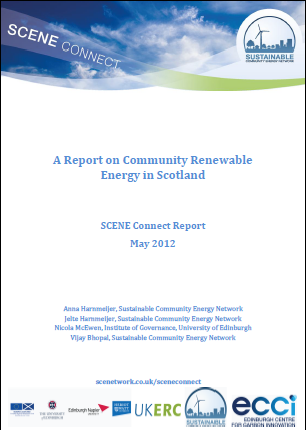Technical Guidance - Solar Photovoltaic
Introduction

Photovoltaic array near Freiberg, Germany
Solar photovoltaic (PV) panels transduce radiant energy from the sun directly into electric current. Solar PV is attractive for several reasons, such as (i) they are simple in their construction and have no moving parts, so are reliable, (ii) they make no noise and (iii) they can be mounted on existing structures, usually without modification. In addition, solar PV cells will generate electricity even when the sun is behind cloud (though less than direct sunlight) so unlike wind power, for example, solar PV will always generate some electricity during the day.
Solar Resource

Horizontal irradiance across Europe
Solar radiation is composed of a broad range of wavelengths – visible light, infrared, ultraviolet (UV) etc. The total power contained in the sun’s radiation falling on an area of ground is called the solar irradiance, and is measured in watts per square meter (W/m2). Solar panels are able to transduce a percentage of this radiation directly into electric current – the percentage of radiation transduced is called the efficiency of the solar panel. This number is important in estimating the energy output of a solar installation, and for modern panels is generally around 15%, and there is generally a trade of between higher efficiency and panel cost.
Installation

South facing roof panels
The primary factor determining the profitability of a solar installation is the location of your panels. Location is important in two ways: firstly - what region of the country you live in, and where on your property you intend to fit the panels. There are big regional differences in sunshine – for example, Edinburgh receives 20% more sunshine than Glasgow over the year. Although we mentioned that solar PV generates when cloudy, the amount is much less than in direct sunlight, so your local climate is an important factor. The importance of location in the sense of where you fit your panels – for example on your roof – is that there is an optimum position in which to fit fixed solar panels. The closer you are to that optimum, the better your installation will perform; so if you intend to fit panels to your roof, you must measure the pitch (angle) of your roof, and also the compass direction in which the roof faces. Directly South-facing is best, and for a panel installed in London, the optimum tilt for overall energy generation over the year would be 42 degrees from horizontal.



